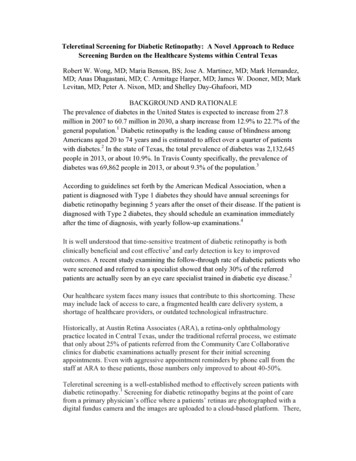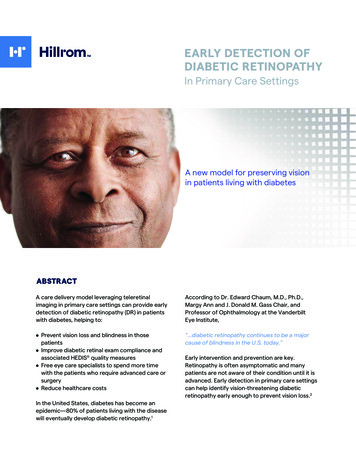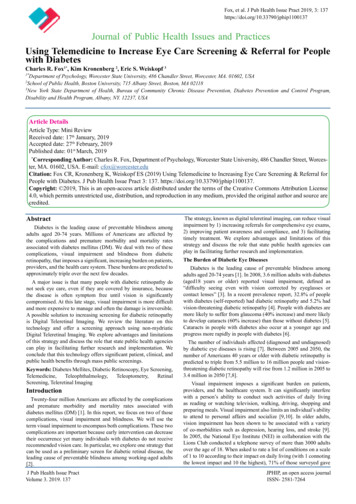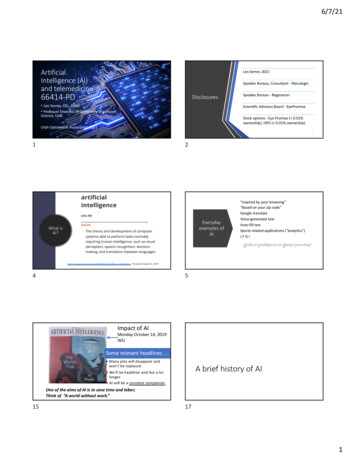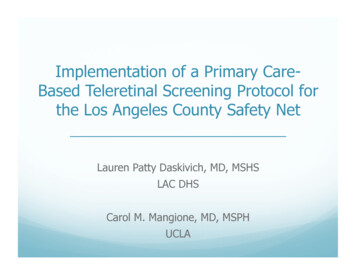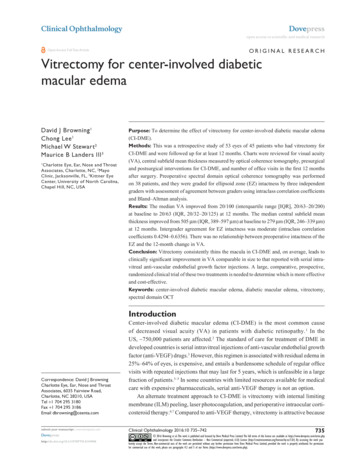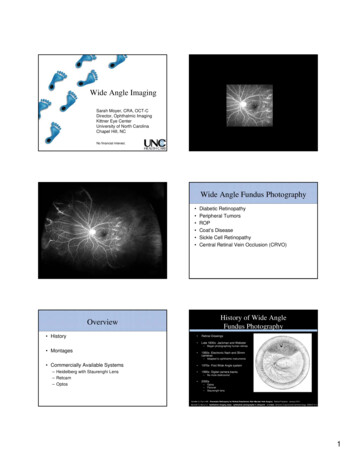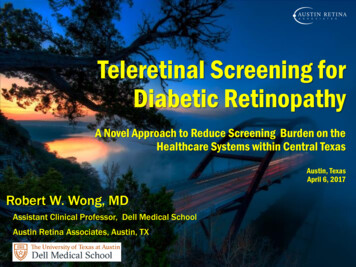
Transcription
Teleretinal Screening forDiabetic RetinopathyA Novel Approach to Reduce Screening Burden on theHealthcare Systems within Central TexasAustin, TexasApril 6, 2017Robert W. Wong, MDAssistant Clinical Professor, Dell Medical SchoolAustin Retina Associates, Austin, TX
3835
200Amputations
136Develop Kidney Disease
1795Severe Diabetic Retinopathy
Diabetes
Leading Cause of Blindness inyounger patients in the US
ADA GuidelinesType 1: Annualscreenings within 5years of onsetType 2: Annualscreenings immediatelyfollowing diagnosisThen, yearly follow upexams.
PAINPOINTPatients don’t get screenedIn Travis County25% made appointmentsAfter vigorous calling, still only 50% madeappointments
Stakeholder: PatientBurden to the patientTravelTime off workCost
Stakeholder: DoctorsBurden to the DoctorPrimary Care Doctor NeedsUnused appointment slot in Specialistsoffice
Stakeholder: Healthcare SystemCost Burden to the Healthcare System
Elements of Disruptive InnovationClayton Christensen. The Innovator’s Prescription. 2009.
Solution: Teleretinal Screening
How Diabetic Teleretinal Screening Works
Our StudyAustin Regional Clinic5 Locations3620 diabetics screened12 month period99% had insurancePrivate practice patientsCommUnity Care / Central Health2 locations1830 diabetics screened6 month periodUninsured or underinsuredSafety net population1. Prevalence and Severity of Diabetic Retinopathy2. Prevalence of Diabetic Macular Edema3. Capture Rate: % of patients with pathology that attended appointmentwith retinal specialist
Overall Prevalence in Travis County5450 patients screenedTotal Prevalence of RetinopathyTotal Prevalence of Macular EdemaPatients requiring Urgent ReferralCapture Rate22.7%6.3%11.8%65.0%
Reduced Burden1558 CommUnity Care patients (85.1%) did notrequire further evaluation by a retinal specialist3249 ARC patients (89.9%) did not require furtherevaluation by a retinal specialist
Those that needed to come in we got inCapture Rate at CC was 65.4%Capture Rate at ARC was 65.5%Previous reports in literature 30%
Differences?Retinopathy and Macular Edema were higher inCommUnity Care patients than Austin Regional ClinicDR: 26.6% versus 20.7%DME: 8.6% vs 5.1%p 0.0002p 0.0002
Does Geography make a difference?CommUnity CareSoutheast Location had worseretinopathy than North-CentralDR: 28.9% versus 24.0%DME: 10.1% versus 6.9%
Hwy 183 CorridorBen White Blvd Corridor
Future DirectionsBetter understand demographic data andbiomarkers to account for differencesCollaborate with Seton Medical CenterCollaborate with Intelligent Retinal ImagingSystems to create a nationwide map of diabeticretinopathy
Make information available to nmentIndustryTech
Special ThanksMaria Benson, BSJose A. Martinez, MDC. Armitage Harper, MDJames W. Dooner, MDMark Levitan, MDPeter A. Nixon, MDShelley Day-Ghafoori, MDStephanie Collins, MBAAnas Dhagastani, MDAustin Regional ClinicMark S. Hernandez, MDJonathan MorganCentral Health / CommUnity CareJason CrawfordIntelligent Retinal Imaging Systemsrwong@austinretina.com@drwongsaysBlog: www.36thandhamilton.com
Teleretinal Screening for Diabetic Retinopathy A Novel Approach to Reduce Screening Burden on the Healthcare Systems within Central Texas Austin, Texas April 6, 2017 Robert W. Wong, MD Assistant Clinical Professor,
